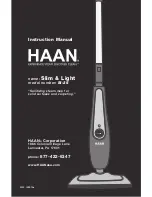
OPERATOR’S MANUAL JDI-20COMBO
OPERATOR’S MANUAL JDI-20COMBO
Assembly:
Operation:
1. Insert the handle into the seats provided and fasten it with the
two (2) screws supplied.
(See Fig. 1)
2. To raise or lower the funnel - loosen the funnel height adjust-
ment lock and move the drain tube up or down to desired
height.
(See Fig. 2)
3. Wheel Assembly:
a. Insert the casters into caster brackets.
b. Place lock washer over caster threaded stud.
c. Place nut onto threaded stud.
d. Tighten.
(See Fig. 3)
Fig. 1
Fig. 2
Fig. 3
1. Charging the tank (creating a vacuum):
a. Open vacuum gauge valve A and venturi assembly B and valve C.
(See Fig. 4)
b. Close suction probe valve D, discharge valve F, air valve E and the
upper valve G.
c. Connect compressed air to the quick connect coupling. When the
vacuum - gauge indicator comes onto the green band and stops (ap-
prox. 30-40 seconds), closed valve B and C and disconnect the air
supply.
(See Fig. 5)
IMPORTANT!
The compressed-air supply must always be between 100 and 120
psi to achieve a full vacuum.
2. Fluid evacuation:
a. Position the evacuator next to the vehicle to be serviced. Turn off the
vehicle and remove the dipstick from the motor.
(See Fig 6)
IMPORTANT!
The motor oil or other fluid to be evacuated must be hot at a tem-
perature between 150/170°F. Suction of oil from the motor must be
done when the motor is off.
b. Insert the appropriate suction probe into the dipstick tube as deep as
possible without touching the bottom. Choose the largest diameter
probe for the best results.
c. Place the suction-probe coupler into the coupling of the suction probe.
Make sure it is completely seated into the coupler.
d. Open suction-probe valve D to begin
e. When the evacuation is complete, close valve D and disconnect it
from the suction probe (evacuation is complete when the needle on
the vacuum gauge begins to flutter).
f. Remove the suction probe from the dipstick tube and proceed with
normal oil-change procedures.
IMPORTANT!
Never fill the tank over the maximum limit that can be seen on the
level indicator.
Fig. 4
Fig. 5
Fig. 6






















